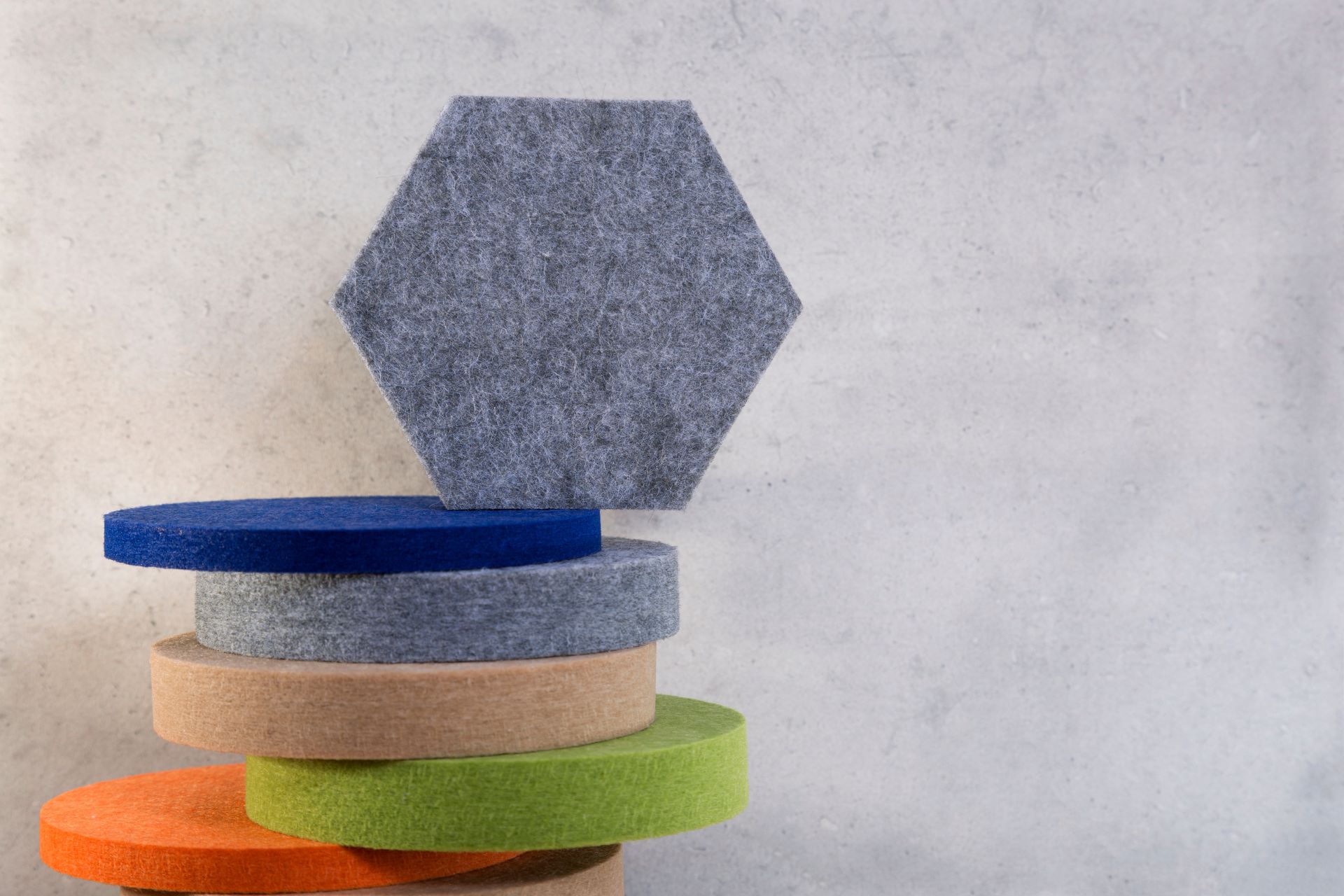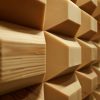Cleaning Acoustic Panels 101: A Guide to Prolonging Lifespan and Improving Performance
As spring approaches, many of us are driven to open up the windows and dust out our living and working spaces. We finally have access to that fresh air we’ve been blocking out for the past few months and we want our surfaces to feel just as fresh. When the spring cleaning itch hits, make sure you don’t forget about cleaning acoustic panels.
Acoustic panels are designed to deliver many years of ideal acoustics. Once installed, they don’t need much in terms of maintenance. They are not, however, completely maintenance-free, and will benefit from a periodic cleaning.
Since acoustic panels for walls and ceilings are unlike many of the other furnishings in our homes and offices, you may not know exactly how to properly clean them. It’s a commonly misunderstood process, so we are here to help you learn the basics of keeping your panels at peak performance for the long haul.
How to tell when panels require maintenance
The first thing you’ll want to assess is whether or not your panels require cleaning at all. You won’t need to stay on top of this weekly, so how do you tell when it’s time to show your acoustic panels a little love? Use your senses and it will come easy.
Do they look dirty?
If you can see visible dust, debris, or stains on your acoustic panels, it’s time to clean them. Depending on the severity of the soils, you’ll use different techniques to get them clean. More on that shortly.
Do they smell?
If you catch a musty odor when you walk past areas of the wall with fabric panels, it may be time for a light disinfection. Acoustic panels are porous, which allows them to absorb sound waves, but that porousness also allows germs to multiply in high humidity environments.
Do they function the way they used to?
Even if you don’t see or smell anything, a noticeable decrease in your panels’ performance could indicate that it’s time to clean them. If the room doesn’t sound as good as it used to, inspect them for dust and debris.
Cleaning Acoustic Panels: The Basics
Cleaning acoustic panels doesn’t need to be tough, and should be a part of your regular cleaning routine. Not only can dirty panels become less effective over time, but they look dingy and can take away from your interior design scheme if allowed to get too bad. Here’s how to keep your acoustic panels looking and sounding great with minimal effort.
Keep on top of things
Cleaning acoustic panels is always easier when we aren’t dealing with years of neglect. By keeping on top of things throughout the year, we can avoid tackling a tougher job later. Here are some ways to keep panels clean without investing too much elbow grease.
Vacuum periodically
One of the simplest ways to keep on top of cleaning acoustic panels is to occasionally vacuum them. Next time you vacuum the space, check your acoustic panels for any built-up dust or debris. Occasionally running a vacuum over your panels prevents dust and dirt from setting in the fabric, which makes cleaning acoustic panels much easier. The frequency will depend upon how quickly the dust settles on your panels.
Use a soft bristled brush attachment and work your way up from the bottom. This will help break dust loose and pull it into the vacuum without spreading the debris.
Clean any spills immediately
If something more substantial gets on your panels, blotting it clean immediately can eliminate the need to use any harsh chemicals on the fabric. This will maintain the integrity of the fabric and keep your panels working the way they should, adding additional lifespan. Blot from the outside and work your way in, rinsing the cloth periodically.
Completely rinse off any cleaning agents
If the spill is too difficult to take care of with simple blotting and clean water, you may need to use a mild cleaning agent on them. If this is the case, ensure you completely rinse away any residual cleaning agent from the fabric. Some chemicals can break down the fabric or core, so ensuring they are completely rinsed out can help your panels last longer.
Avoid abrasives and harsh scrubbing
Even if you’re dealing with tough or set stains, it’s important to avoid using abrasives or scrubbing too vigorously when cleaning acoustic panels. Both of these scenarios can damage your panels and decrease their lifespans.
If you can’t remove the stain with a damp, soft cloth and mild detergent, try using cleaners designed for fabrics and furniture. They are likely to be tough enough to remove stains while gentle enough not to damage your panels.
Some panels can be cleaned safely with a steam cleaner and wand. Cleaning acoustic panels with this method can be a great way to break up stubborn stains and pull them out. Not all types of panels will stand up to a steam clean, however, so make sure steam cleaning is safe for your panels before attempting.
The most likely candidates for steam cleaning are going to be waterproof acoustic panels and panels designed for high humidity areas. Thoroughly cleaning acoustic panels this way once a year can effectively keep your panels clean and smelling fresh.
Always refer to manufacturers’ recommendations
Some acoustic fabrics stand up to certain cleaning products better than others, so it’s important to check your manufacturer’s recommendations before cleaning. If the fabric on your panels can handle a stronger cleaning agent, you can get by without resorting to agitating the soil with abrasives or hard scrubbing.
Cleaning acoustic foam
Acoustic foam panel cleaning is treated a little differently than cleaning fabric wrapped acoustic panels. This delicate foam is open to the elements and is much less dense than the type of high density material inside wrapped panels. It’s usually best to be particularly gentle in your approach to cleaning them.
Dust and vacuum foam panels with a soft bristled hose attachment regularly to keep airborne particulates from setting on them. Quickly and gently removing this debris keeps your foam looking sharp and prolongs acoustic panel lifespan. Occasionally spray them with a light spritz of sanitizing solution to help remove germs and odors. Test solution in an inconspicuous spot first to verify colorfastness.
When all else fails…
If you’ve tried all these tips for cleaning acoustic panels and still can’t get your spot out, it may be time to bring in the big guns. If you are unable to clean your panels yourself without causing potential damage, reach out to the professionals. Professional cleaners will go to great lengths to effectively clean your panels without causing damage.
Reasons soundproofing panel maintenance is important
Aside from simply making your panels look nicer, cleaning acoustic panels comes with some benefits you’re sure to love. Here are three great reasons to properly clean and maintain your acoustic panels.
They’ll last longer
An acoustic panel in perfect environmental conditions may last decades with little decay. One of the biggest drivers of acoustic panel breakdown is moisture and other contaminants that are allowed to sit on the surface for extended periods. Keeping them clean is your best bet for keeping acoustic panels around for the long haul.
Cleaning increases acoustic panel performance
Regularly cleaning acoustic panels helps them perform at their best by allowing the fabric to function as intended. Too much built up material can clog the pores on your acoustic fabric, preventing sound waves from passing through it and into the absorbent core.
You will avoid repairs
If you are unable to remove a spot or stain, you may have to either live with it or have it recovered. Keeping up with minor maintenance and tackling any spills or spots the moment you notice them can give you years of performance out of your panels without the added cost of fabric repairs or recovering.
Disposing of acoustic panels
If the time comes that your sound absorption panels cannot be saved, you will have to dispose of them. Doing so safely helps keep your environment clean and your loved ones healthy. Here’s how to dispose of acoustic panels safely.
If you’ve got very old panels, there is a chance they contain asbestos. If this is the case, you may have to take special preparation steps before you can dispose of them legally. It’s a good idea to find out if they contain asbestos before handling them, as this will minimize your exposure.
Most panels manufactured after 1990 will not contain asbestos, so you’ll either simply dispose of them in the trash, at transfer centers or landfill sites, or recycle them. Looking up the make and model of your panels on the manufacturer’s website is the best way to determine the proper method of disposal. The more eco friendly acoustic panels are, the more options you have for safe disposal.
The takeaway
Cleaning acoustic panels properly is part of keeping them working properly and maximizing their lifespan. From free standing acoustic panels to home theater wall panels, most soils can easily be cleaned with a damp cloth and mild soap. For tougher stains, fabric and furniture cleaners should suffice. If you need something more powerful, it’s best to consult the manufacturer’s recommendations for cleaning. If you need more info on your panels to make the right decision, contact the dealer you purchased them from.


















Add comment
You must be logged in to post a comment.